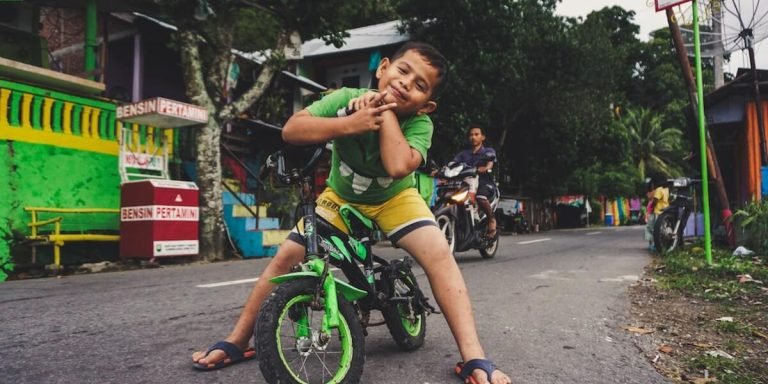Behavior Intervention Plan Example: A Real Life Scenario in Childhood Education
Familiarizing ourselves with a behavior intervention plan example helps in understanding how to effectively implement strategies that cater to the unique needs of children who may exhibit challenging behaviors. This critical component of special education aims at using positive reinforcement techniques, enabling educators and parents to deal systematically with such situations.
In this blog post, we will delve into a real-life scenario involving the application of these techniques in childhood education. We aim to showcase practical approaches and offer support for anyone seeking ways to streamline their own behavior intervention plans. Understanding this example can provide invaluable insight into tailoring effective solutions for individual learners’ requirements within the framework of special education resources and support.
Did you know?
Did you know? In a study published in the Journal of Autism and Developmental Disorders, over 60% of teachers reported that Behavior Intervention Plans (BIPs) were effective in reducing problem behavior in their students.
Understanding Behavior Intervention Plans (BIP)
Behavior Intervention Plans or BIPs are a crucial component of special education resources. They specifically address behavioral challenges children may face, outlining strategies to mitigate these issues and foster an inclusive learning environment. In today’s digital age, technology has become increasingly handy in implementing such plans effectively—an example being the utilization of applications that track behavior patterns for consistent monitoring.
Creating an optimal Behavior Intervention Plan includes understanding where the child’s actions stem from—be it attention-seeking behaviors or avoidance tactics—and tailoring interventions accordingly. The incorporation of technology enhances this process by offering data-driven insights and customized solutions not available before. For instance, software can provide teachers with real-time alerts about possible triggers so they can intervene promptly—a practical application illustrating how edtech revolutionizes traditional methods in special education.
Remember that while planning is essential, execution plays a significant role as well – both educators and parents must ensure consistency when applying devised strategies across different settings at school & home respectively for maximum impact on child development outcomes . This partnership between stakeholders underscores importance collaboration heart successful implementation any intervention plan , demonstrating interconnectedness evolving educational landscape ensuring student success .
Key Components of an Effective BIP
1. Identification of Problem Behaviors: The first step towards crafting an effective BIP is identifying problem behaviors that hinder learning or social interactions. These may include aggression, frequent distractions or avoidant tendencies.
2. Analysis: Once problematic actions are identified, it’s imperative to figure out why these occur through a comprehensive ‘Functional Behavior Assessment’. This analysis aims at discovering triggers behind erratic conduct — be it environmental factors like noise level or emotional dilemmas such as anxiety.
3. Strategy Formation: Based on insights from the assessment conducted earlier; clear-cut proactive strategies must be devised to address inappropriate behavior patterns with adequate interventions tailored according to each child.
4 .Use of Technology Integration: In 2023, technology plays an indispensable role even in Behavioural Intervention Plans by providing digital platforms capable enough not just documenting but analyzing trends over time thus ensuring constructive feedback loops while also enhancing student engagement levels significantly.
5.Teaching Alternative Skills : Besides curbing disruptive conduct; there should always exist provision guiding children toward positive behavioral modifications especially tactfully instilling communication skills plus conflict resolution techniques beneficial invariably throughout life’s trajectory .
Tailoring BIP Strategies for Individual Needs
One of the most critical aspects to understand in special education and childhood learning is Behavior Intervention Plans (BIP). The idea behind BIPs lies in its adaptability – adjusting strategies based on individual needs, just like tailoring a suit. But how can we effectively tailor these plans?
Let’s delve deeper.
Firstly, it’s important to note that no two children are identical; thus, any behavior intervention plan example cannot be applied universally. Tailoring starts with a deep understanding of each child: their strengths, weaknesses, triggers and comfort zones.
Next comes an essential tool for every modern educator – technology integration in education. Technology can help us make leaps forward when it comes to shaping adaptive behavior intervention plans. Advances such as digital monitoring tools or interactive apps can provide real-time feedback about the child’s behavior patterns which allows educators to modify the strategy promptly if needed.
Moreover, using technology-based teaching methods makes learning more engaging and productive for many youngsters who often struggle with traditional instruction styles due their unique learning needs.
1) Augmented Reality (AR) games could work wonders within an adapted BIP framework by enhancing motor skills while simultaneously instilling good behavioral practices.
2) Noise-cancelling headphones might assist hypersensitive children during high-stress periods throughout the day.
3) Virtual reality programs tailored specifically towards social-emotional growth have shown promising results across recent years.
These tech-integrated measures offer visual cues which may be helpful because some learners process images better than spoken words alone.
Implementing a Behavior Intervention Plan in Special Education
Implementing a behavior intervention plan in special education has undergone drastic transformations, particularly with technology integrations in recent years. The keyword is customization because no two children exhibit the same set of behavioral challenges and therefore, require unique approaches. In 2023, for example, schools are increasingly leveraging digital tools to create effective behavior intervention plans tailored specifically towards meeting individual student’s needs.
Technological advancements have allowed educators to build more robust and dynamic observation systems. Traditionally, observing a child’s behaviour involved manual tracking which was not only time-consuming but also prone to inaccuracies due to human error or oversight. Today however teachers can use specially designed software applications that allow them real-time data collection on various parameters like frequency, intensity or triggers for specific behaviors.
The technological shift brings not only efficiency but also remarkable improvements to intervention design. Treatments now become highly personalized through comprehensive data analysis—unimaginable a few years ago. Digital platforms feature smart analytics that offer custom recommendations by analyzing patterns in behavioral data. Parents and educators can make informed decisions on appropriate strategies, integrating these extraordinary educational resources and support mechanisms into their daily routines.
Steps for Developing and Executing a BIP
Developing and executing a Behavior Intervention Plan (BIP) requires an in-depth understanding of the student’s needs, effective strategies for behavioral change, and efficient integration of technology. Following these steps can produce a successful BIP example.
The process begins with assessment. Teachers, parents or support staff must closely observe the student to understand what prompts their challenging behavior and how they react to various situations. Utilize technological tools like digital observation logs or analysis software which offers more precise assessments compared to manual methods.
Next step is planning. Based on observations made during the assessment phase decide upon interventions that would be most beneficial for your child’s learning development along with integrating appropriate educational resources into daily activities within special education framework . Consider applications that personalize lessons according to children’s abilities reducing frustration often contributing towards negative behavior patterns .
Monitoring Progress and Adapting the Plan
Incorporating a behavior intervention plan in special education is not a one-time activity. It’s crucial to keep track of the student’s progress and adapt the plan as necessary, which ties back into our earlier discussions on technology integration in education.
One example of using modern tools for monitoring progress would be digital tracking systems. These applications allow educators to record behaviors, mark improvements or issue areas with ease compared to traditional paperwork that can get misplaced or disorganized over time. A behavior intervention plan example could involve an app where teachers input data about disruptive classroom actions so they can visually monitor patterns and make informed decisions regarding adjustments.
Moreover, online platforms designed for sharing updates provide an efficient way for all stakeholders – from parents, therapists, tutors who might be remotely located – easy access to this information alongside regular communication lines like emails and calls. This type of technological integration fosters transparency in terms of how the child is developing under their individualized study program.
As part of adapting plans according to learner needs, adaptive learning software stands out among other resources designed specifically for special education settings due today’s technologically advanced era we live in 2023. Adaptive programs are customized based on each student’s response times and answers; complex algorithms assist these innovative teaching aids that modify difficulty levels depending upon learners’ capabilities .
The Role of Technology in Enhancing Behavioral Support
A behavior intervention plan (BIP) acts as a blueprint to address behavioral issues manifesting in children during their learning process. The integration of technology has exponentially enhanced this mechanism, creating more tailored and effective solutions for young learners.
In the realm of special education resources and support, software applications designed specifically for BIPs have become invaluable tools. These applications go beyond generic child monitoring apps by providing targeted feedback based on each individual learner’s needs. They can identify patterns, provide insights into triggers leading up to challenging behaviors, and suggest evidence-based strategies that are most likely to be effective given the child’s unique profile.
The utilization of these technologies provides an opportunity not only for continuous monitoring but also proactive involvement from educators or caregivers even when they’re physically distant. Thanks to advancements like real-time updates and interactive dashboards found in some advanced BIP software suites – parents or teachers can instantly view progress reports, enabling them instant scope for adjustments if required — all at their fingertips.
To give you a concrete example: suppose we talk about an app which uses AI algorithms through its cutting-edge facial recognition feature where it analyzes emotional responses shown by students while tackling different educational tasks; using this data it designs bespoke yet flexible learning modules aimed towards enhancing overall student engagement alongside reducing any negative reactions faced during traditional teaching methods thereby promising improved academic results combined with less disruptive classroom atmosphere.
Innovative Tools to Streamline BIP Management
In the modern landscape of education, behavioral support programs have become increasingly sophisticated and intricate. At the core of these initiatives is a critical component: the Behavior Intervention Plan (BIP). These well-documented plans are crafted for individual students to assist educators in managing behaviors that could be disruptive or destructive.
The process starts with understanding behavior intervention plan examples. By examining such models, it becomes clearer how BIPs establish clear expectations for positive student conduct while also outlining strategies to address any identified problematic actions effectively.
However, developing and maintaining an effective BIP can often prove challenging due to its time-consuming nature and complexity. This where technology steps in as a game changer! Innovative tools have hit our screens that embrace technology’s potential role not only in enhancing educational delivery but also streamlining tedious administrative tasks like BIP management.
Online platforms offer user-friendly interfaces allowing easy creation of comprehensive actionable plans fitting each student’s unique needs—often simplifying what would otherwise be a drawn-out task into mere minutes instead!
Digital databases come fully equipped with keyword tagging methods facilitating quick retrieval of relevant data regarding even specific incidents associated with particular individuals—forever saying goodbye to lost files or misplaced paperwork!
Moreover, teachers now find real-time monitoring through mobile apps very beneficial because they provide instant notifications on lapses or success stories during school hours — offering them timely insights into whether interventions are working expectedly.
Assessing Tech-Based Interventions’ Impact on Student Outcomes
The widespread use of technology in contemporary classrooms means digital platforms can play a significant role in creating and implementing behavior intervention plans. As part of the broader scope of special education resources and support, modern technologies offer data-driven practices for improving student outcomes.
With a view to understanding these tech-based interventions’ impact on students, it’s essential we delve deeper into behavioral intervention plan examples made possible through cutting-edge technology.
Consider how educators today utilize mobile applications that track student behaviors real-time – an empirical approach enabled by advancements in edtech. Students who may have struggled to maintain focus or display socially acceptable conduct now receive immediate feedback about their actions with the aid of such apps. The immediacy ensures consistent reinforcement which is integral to positive habit formation.
Similarly, cloud-computing has revolutionized documentation accessibility allowing teachers at every level access progress reports anytime anywhere from virtually any device! This convenience translates not only as better-maintained record keeping but also facilitates quicker response times when tweaking behavior plans become necessary based on performance metrics recorded over time.
Virtual Reality (VR) too holds great promise within this context; offering safe spaces where students can practice social skills without fear or apprehension often associated with physical interactions until they are comfortable enough navigating similar situations offline. Such VR sessions combined with guided therapy help enable sustained improvement much faster than traditional methods would permit otherwise.
Conclusion
In conclusion, the real-life scenario demonstrated in this post provides an illustrative “behavior intervention plan example” that not only illuminates its practical application but also gives inkling into its profound impact on childhood education. It proves how imperative and effective a well-crafted behavior enhancement strategy can be for facilitating your child’s learning journey while equipping them with necessary social skills.
Don’t let the process of educating children overwhelm you; there are resources aplenty at your disposal right here. We welcome you to probe further into our website where we unpack more about such educational strategies crafted for young minds or foster connections with other parents and educators navigating similar scenarios. Remember, creating nurturing environments conducive to growth is exactly within reach – one good read away!







